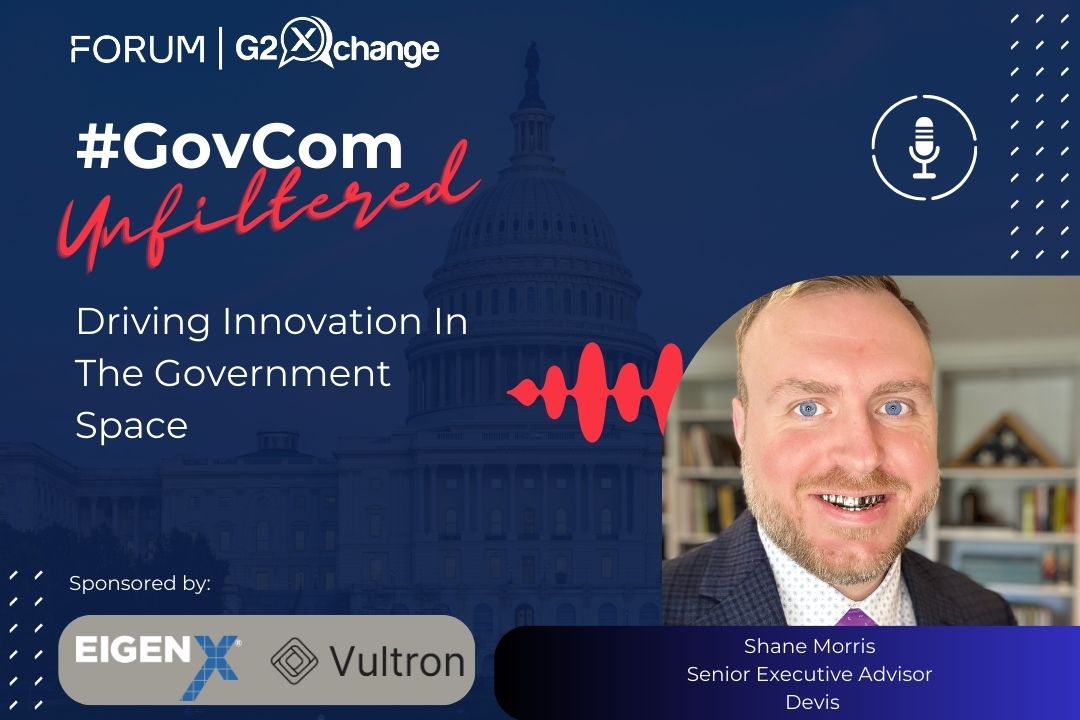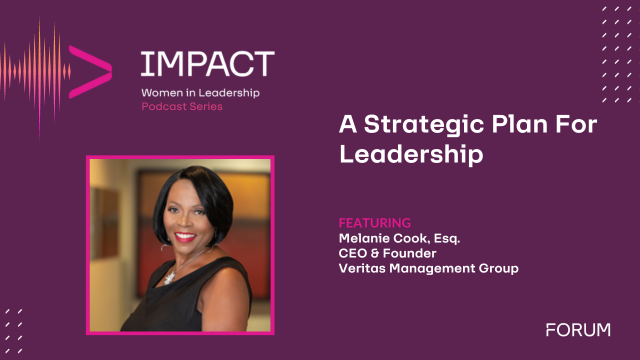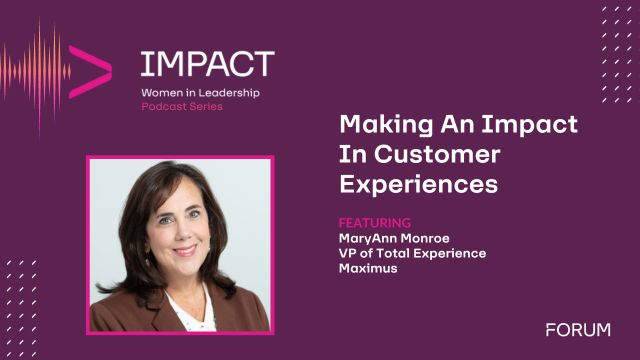This recent interview with Sean Hughes, Chief Design Officer at Philips Healthcare, examines Philips’ approach to Human Centered Design, the future of patient/provider engagement, modernization with a human-centered focus and the challenge of telehealth.
This article was featured in the recent FedHealthIT Winter 2020 Magazine.
What are the Next Steps for How We Think About Human Centered Design and What Does this Look Like in the Future?
Human Centered Design (HCD) is being talked about more widely in recent years but Philips has been practicing it for a lot longer. We have always tried to put people at the heart of the process, thinking of the people who will be interacting with products. That includes the patient, but also the provider who is delivering care, the institution managing that care and the other stakeholders along the way.
To truly bring something alive you have to understand all the various perspectives and bring those all into the correction process. That means incorporating design thinking and lean methodology and working in an iterative, rather than a linear way. It means engaging stakeholders in the discovery of problems and then treating the problem in a way everyone can understand. HCD is so important in the software world. People are confronted by both good and bad examples on a regular basis and when it comes to Healthcare, we really want to ensure we aren’t designing poorly.
Does HCD Take More Time?
I don’t think it takes more time, it’s more about using the time you have more wisely. Every project has a time, cost and quality component. These are all non-negotiable and you need to balance your time on the three for optimal results.
When it comes to HCD, if you are able to spend a little time making a paper protype that can drive some anecdotal user experience, there is the opportunity to start to test simply and early. It doesn’t take a lot of money or time and it is cheaper and more effective in the long run because you are eliminating user challenges from the start.
As you design this way, you start to build reusable modules and components; you are building well designed components that you can port to other applications where similar features are needed. Efficiencies come from building a library of tested, successful modules that can be reused and help support the delivery of IT solutions at scale.
Does Telehealth, or Remote Healthcare Solutions, Pose Challenges to Human Centered Design?
Telehealth has a lot of challenges. From a design perspective, there are multifaceted challenges to solve from basic ergonomics such as the camera setting for the best provider and patient experience; the interaction with software; sound; lighting… All of these components come together to create what will either be a good or bad experience. The challenge is finding ways to control and mitigate against these challenges.
Tell us About ATLAS
ATLAS is a program developed in support of Veterans Affairs. For this, we challenged ourselves to create, in a remote setting, a replication of the one-to-one interaction the patient and provider would gain from an in-person visit.
We took a complete HCD approach, engaging with the VA through the Veterans of Foreign Wars of the United States (VFW). We visited locations together to see what users would expect, traveling to Montana, California and Pennsylvania. We met with Veteran user groups, explained what we had in mind and got their feedback. We knew we had to solve local issues but also create a scalable solution.
The solution we came up with is the ATLAS pod. Because we can’t control the built environment in all locations, because in some locations there may not be appropriate space that would be visually private, or have the right conditions, we created a prefab solution that can be dropped into an existing building that has an 8ftx8ft square space. Without having to do a lot of remodeling, we can provide an environment that has been perfectly designed to have that optimal experience including different modes of lighting, the camera situated at the right position and with zoomable capability, along with other technical features to ensure the patient/provider encounter is the best it can be without the commute.
Think of DoD, How do You Design Products and Systems that Work for Patients (Soldiers) in that Type of Environment?
Supporting DoD requires an understanding of that more rugged environment. Though it isn’t possible for us to visit all locations in the same way, we can take the same approach, using the Veterans on our team, pulling in their firsthand experience to get the voice of users, sharing concepts in mid-flow with stakeholders in the Military Health System to get their feedback. We may not be able to be as personally immersive but we can still discover user requirements from various stakeholders, integrate those into a prototype to get feedback, iterate and deploy.
How will Looking at Modernization and Innovation from that Human-Centered Focus Move Healthcare Forward?
There are a few things we see driving the way the industry will need to move forward. Mobile first will certainly be the way. With so many of us now having a computer in the palm of our hands through our smart phones, the way people now expect to interact with services, from banks to hotels, with that mobile, 24/7 access has changed and Healthcare needs to move in that direction.
People also expect more on-demand opportunities. Think of the one click purchase from Amazon, delivered by drone within hours. Those kinds of interactions set the user expectation.
That on-demand component also factors in convenience, and the ability to do it when it is convenient for the user, rather than during conventional business hours. Translate that to Healthcare and it could mean wanting an appointment with a care provider when it is convenient for the patient, not the provider. There has also been that power shift between patient and provider because patients now have an ability to choose different people to go to and different options for care delivery. How we access service has to fundamentally change.
We see, through the work at VA and DoD, an ability to be responsive to care service and to do it at large scale. In the context of this large scale, we see innovations being made in challenging circumstances and to a high level of robustness that will almost certainly make them equally successful in the less demanding commercial market. We also see innovations in the commercial world that could easily be adopted and applied in the Military context so there is an opportunity for both to feed off of and use each other’s successes.
What are Some of the Most Remarkable Innovations You are Seeing in HCD?
I think the most remarkable thing is the growing understanding of the value in designing things well. The UK Government now has a 10-step process to design better public services and step one is to start with the user.
When we think about industries like banking and travel that are highly regulated and have been able to move to mobile, to 24/7 connectivity without being slowed down by regulation, that is quite remarkable and they are setting the pace for Healthcare to follow.
How does Design Contribute to Philips’ Overall Mission of Driving Innovation and Improving Lives?
Working with Philips almost 27 years, all within the design function, I’ve had the opportunity to work in Europe, Asia and now in the U.S. so I really have had the opportunity to develop a global perspective. I’ve spent the past decade specialized in Healthcare, working on everything from products to software and built environment, architecture, interior design and layout of spaces where products are used. As the head of Philips’ global consulting practice, I work with Healthcare providers around the globe to rethink Healthcare delivery and then as lead for the North American design team, am able to apply that insight here.
At Philips, working in design we get to work across the company. One of my team is always involved in every research and development effort, thinking about the product, the software, the environment, really being in the middle of it all. We are going into the field and meeting stakeholders, gathering insights that inform roadmaps and future direction. Looking at the experience from the beginning, through to post deployment follow up, we don’t want to deliver and walk away, but to partner. We won’t always get it 100 percent right the first time but through connecting with people, taking feedback, coming back to the people at the heart of it all, we can get it mostly right to start and then iterate over time to get to that 100 percent.
ABOUT SEAN HUGHES
 As Head of Design Consulting for Philips, Sean leads a global team that is tasked with developing a broad range of solutions including products, software, digital services as well as architectural concepts that are shaping the future of Healthcare. Engaging directly with Healthcare delivery organizations he and his team leverage design thinking to transform care provision in meaningful ways. Over a 25+ year career across three continents and multiple business categories Sean has built and led multidisciplinary award-winning creative teams that deliver business results while maximizing the role of design as a key element of sustainable competitive advantage.
As Head of Design Consulting for Philips, Sean leads a global team that is tasked with developing a broad range of solutions including products, software, digital services as well as architectural concepts that are shaping the future of Healthcare. Engaging directly with Healthcare delivery organizations he and his team leverage design thinking to transform care provision in meaningful ways. Over a 25+ year career across three continents and multiple business categories Sean has built and led multidisciplinary award-winning creative teams that deliver business results while maximizing the role of design as a key element of sustainable competitive advantage.
ABOUT PHILIPS
Philips is a leading health technology company focused on improving people’s health and enabling better outcomes across the health continuum from healthy living and prevention, to diagnosis, treatment and home care. Philips leverages advanced technology and deep clinical and consumer insights to deliver integrated solutions. Headquartered in the Netherlands, the company is a leader in diagnostic imaging, image-guided therapy, patient monitoring and health informatics, as well as in consumer health and home care.












